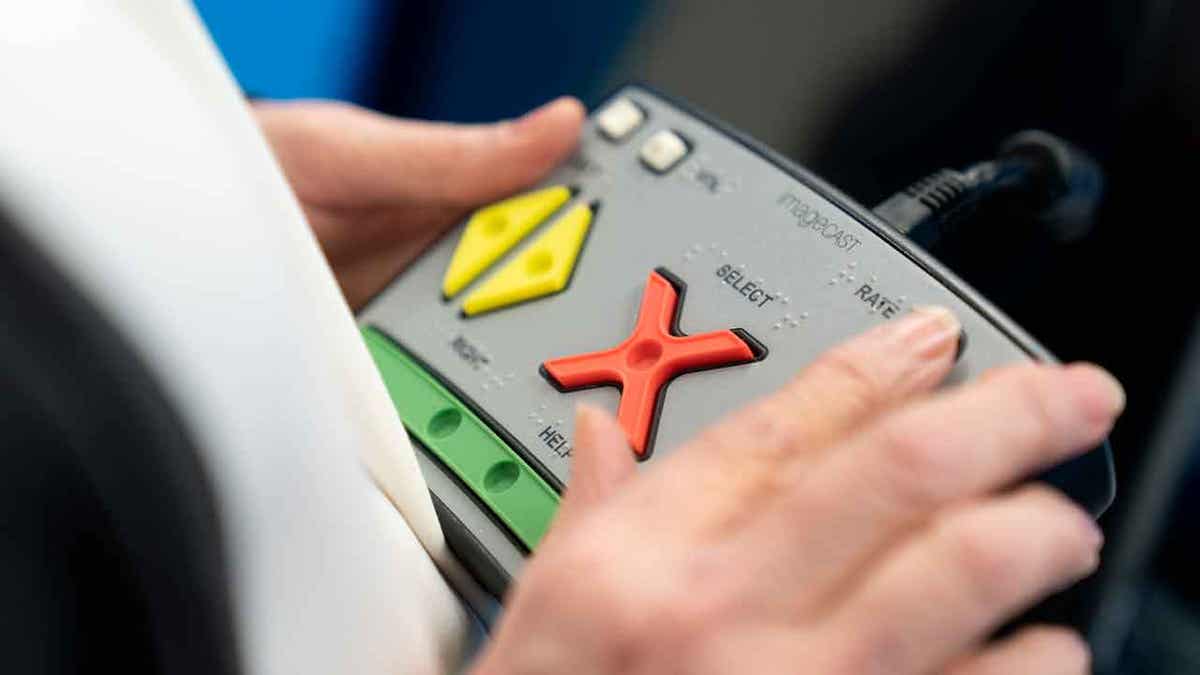Artificial intelligence has proven beneficial in some U.S. hospitals, including in detecting cancer
Doctors believe artificial intelligence is now saving lives, after a major advancement in breast cancer screenings. AI is detecting early signs of the disease, in some cases years before doctors would find the cancer on a traditional scan.
Artificial intelligence technologies have the potential to significantly alter the lives of human beings, especially those with disabilities. There are numerous ways that AI can and has already positively impacted the lives of the disabled, but concerns over whether companies and websites using AI remain compliant with the Americans with Disabilities Act (ADA) do exist.
What does it mean to be ADA compliant?
The Americans with Disabilities Act is a federal civil rights law that aims to help protect the disabled by giving them fair opportunities. Many elements of life are ADA regulated, such as buildings and certain websites. In order to be ADA compliant, technology must be accessible to those with disabilities based on the guidelines in the act. Certain businesses’ web content must be accessible to those who utilize a screen reader or other assistive technology.
Is artificial intelligence compliant with ADA guidelines?
Artificial intelligence is not intrinsically ADA compliant or not, but how it is used can either help or hinder the disabled, including those with vision and hearing impairments. When used within the hiring process, apprehension over whether AI allows for equal opportunities for candidates with disabilities, based on Title I of the Americans with Disabilities Act, has been scrutinized. On the other hand, AI has proven instrumental in improving the lives and independence of those with disabilities.
ARTIFICIAL INTELLIGENCE: FREQUENTLY ASKED QUESTIONS ABOUT AI
How can artificial intelligence be a barrier to ADA compliance?
Artificial intelligence is made capable of its many applications through machine learning. This process is dependent on the training data the algorithm receives. Typically, the data is based on the average individual, in which case those with disabilities are not taken into consideration.
Since AI developments are often designed with the average user in mind, visually and hearing-impaired individuals may be at a disadvantage with some of these technologies. For example, automatic speech recognition systems are usually designed with common speech patterns in mind and are not compatible with speech impediment patterns.

AI can help or hinder a disabled person's ability to access the web. Some advancements can help users with impairments better obtain the information they need. (Cyberguy.com)
The main concern of AI in terms of compliance with ADA guidelines is with companies’ hiring processes. The Equal Opportunity Employment Commission (EEOC) expressed concern in its technical assistance document regarding AI tools that can screen out job applicants with disabilities. When using these AI screening tools, employers are expected to ensure compliance with the ADA.
How can artificial intelligence assist those with disabilities?
More often than not, AI seems to be advantageous to the disabled rather than a hindrance. AI technology helps disabled individuals engage with their world and surroundings with greater accessibility. The use of virtual assistants helps disabled individuals live with a greater amount of independence, such as by using a smart home device to easily adjust their environment, such as turning on lights and playing music.
Many inventions that we use in the world today were created to help the disabled live with fewer restrictions. One of the original typewriter designs was invented to give the inventor’s blind friend the ability to write and the original audiobooks, called "talking books," were created so that the visually impaired could experience literature. The creation of new AI tools for those with disabilities may result in inventions beneficial for all.

A blind voter uses headphones and audio along with an electronic controller outfitted with Braille to vote in an election. Artificial intelligence technologies continue to develop to assist the blind and deaf with their lives. (AP Photo Erin Hooley)
Many companies are entering the AI space to develop technology for disabled communities. Microsoft’s AI for Accessibility is designed to innovate with AI and offer grants to companies to build tools with the goal of independence for the disabled. Voiceitt is a machine learning app designed to help those with speech disorders communicate with their home devices and with other individuals.
Many AI technologies have even been created to ensure that a website or company remains ADA compliant. These apps and widgets claim to help web content be more accessible to all visitors, even those with disabilities. Some of the guidelines that these programs help a website achieve include:
- Easy navigation, including when using keyboard shortcuts.
- Adjustable web content based on the needs of the users.
- Information that is presented in a simple and digestible format.
- Information that can be comprehended.
Additionally, this AI technology aims to keep websites up-to-date with the latest guidelines that customarily change, helping to avoid unnecessary lawsuits and providing visitors with a positive user experience.

Blind man at his computer workstation using braille keyboard. AI technology is bringing advancements to help the visually, verbally and hearing impaired to use computers in greater capacities. (Dieter Menne, picture alliance via Getty Images)
AI for the visually impaired
AI has made a positive impact on providing accessibility for the visually impaired by helping them interact with and easily navigate a web page or document. AI apps and tools have been designed to help blind visitors read a document by reformatting the text into an audio format and describing images on the page. AI technology can also help the visually impaired by making adjustments to elements of a page such as font, colors, and spacing.
ARTIFICIAL INTELLIGENCE QUIZ! HOW WELL DO YOU KNOW AI?
AI for those with speech impairments
Similarly, AI helps individuals with speech impairments communicate with others by converting their regular speech into an output of either text or audio. The advantage is that they can utilize this technology to access services and complete searches on the internet. AI can also help with communication, such as through screen readers on electronic devices and voice control assistants such as Siri.
CLICK HERE TO GET THE FOX NEWS APP
Advances in AI have allowed the internet to be more accessible to all demographics, even those with disabilities. AI technology is continually being explored to create accessibility in various realms, such as in the classroom and at work.





















